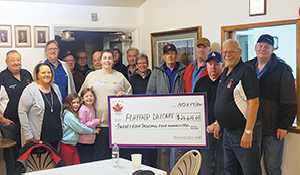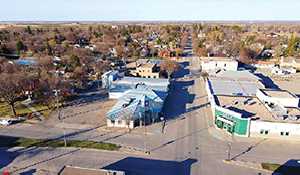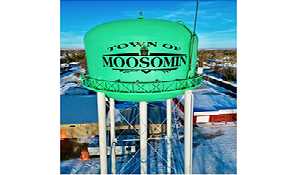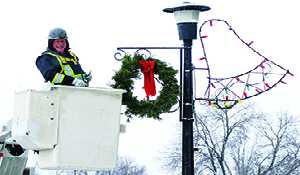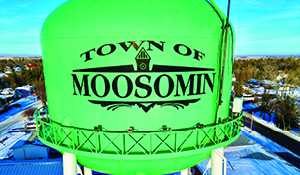On Monday, November 11 take time to remember those who died in war
November 7, 2019, 4:03 pm

Monday, November 11 is Remembrance Day, initially set to mark the end of the First World War.
The armistice to end the First World War, known at the time as the Great War, had been signed on the eleventh hour of the eleventh day of the eleventh month, in 1918.
More than 100 years later, people still take the time to remember.
Clay and Ami Leduc say their efforts to restore the fence around the Moosomin Cenotaph this summer was a physical act of Remembrance—a way of honoring those memorialized on the Cenotaph.
In communities across our region, Legion members work hard to preserve the memories of those who made the ultimate sacrifice in each community, and people continue to support our Legions’ poppy drives, and continue to show up in large numbers at Remembrance Day services.
At each Remembrance Day Service this coming Monday, a roll of honor will be read out.
The name of each sailor, soldier or airman from each community will be read and honored.
Behind each of those names is a story. Behind each of those names is a family that lost a loved one.
All of those stories are heartbreaking. All of those stories are touching.
Some of the stories are truly amazing.
These are the stories of three local soldiers who will be remembered on Monday—three men who received the Victoria Cross, the highest honor a soldier can be given in this country.
John Robert Osborn, who farmed near Wapella, was awarded the Victoria Cross posthumously for sacrificing his life to save his comrades.
On December 19, 1941, in the British colony of Hong Kong, the company of the Winnipeg Grenadiers to which he belonged had become divided during an attack on a steep rising hill, Mount Butler.
A part of the company, led by Company Sergeant-Major Osborn, captured the hill at the point of the bayonet and held it for three hours until they were forced to withdraw under heavy fire.
Osborn and a small group covered the withdrawal, and when their turn came to fall back he single-handedly engaged the enemy while the remainder of the group successfully rejoined the company.
During the afternoon, the company was cut off from the battalion and completely surrounded by the enemy, who were able to approach to within grenade-throwing distance of the slight depression that the company was holding.
Several enemy grenades were thrown, which Osborn picked up and threw back.
The enemy threw a grenade which landed in a position where it was impossible to pick it up and return it in time.
Shouting a warning to the others, Sergeant-Major Osborn threw himself on the live grenade, which exploded, killing him instantly.
Lieutenant Robert Grierson Combe, who owned a store in Moosomin before the First World War, was awarded his Victoria Cross posthumously.
On May 3, 1917, Combe’s battalion was ordered to occupy the German trenches near the town of Acheville, France.
The Germans had anticipated an attack, and by the time the Canadians reached a point 500 yards from the German lines, Combe was the only officer in his company still alive.
Combe and the other survivors found themselves caught in an artillery crossfire between the Germans and a barrage from their own guns.
Leading six of his surviving comrades, he attacked the enemy position, capturing 250 yards of trench and eighty prisoners. Combe was fatally wounded by a sniper’s bullet in the final charge.
Then there’s Sergeant Harry Mullin, the third local Victoria Cross recipient. Mullin farmed just northeast of Moosomin.
In January 1918, Sergeant Mullin was informed that he had been awarded the Victoria Cross for his actions on October 30, 1917, in Passchendaele, Belgium.
25-year-old Sergeant Mullin single-handedly captured a German pillbox that had withstood heavy bombardment and was causing heavy casualties, holding up the attack.
Mullin rushed a snipers’ post in front, destroying it with grenades, shot two gunners and forced the remaining 10 to surrender. His clothes were riddled with bullets, but he never faltered.
After the war, he returned to Moosomin. He was appointed Sergeant-at-Arms for the Saskatchewan Legislature in 1934.
Those three local Victoria Cross winners, out of only 17 Victoria Cross honors awarded in all of Saskatchewan, show the kind of sacrifice that were made by many, many Prairie youth during the two World Wars.
Those are only three stories.
But there is a story behind every one of the names that will be read out at Remembrance Day ceremonies in every community in our area.
Every one of those names represent a life cut short.
Every one of those names represents broken hearts and tears for those left behind.
Every one of those names represents unrealized potential.
We simply have no idea what some of those soldiers may have accomplished had they returned home and had the opportunity to live out their lives, as you and I have.
On the following pages—pages 30 and 31—is a list of times and locations for Remembrance Day ceremonies in communities across our area.
Please take time to remember on Monday, November 11.
And when you do, please remember that behind each of those names that is read out is a life and a story that deserves to be honored.



























